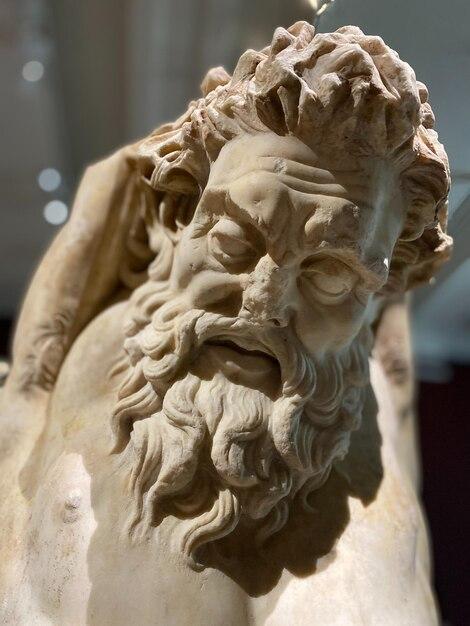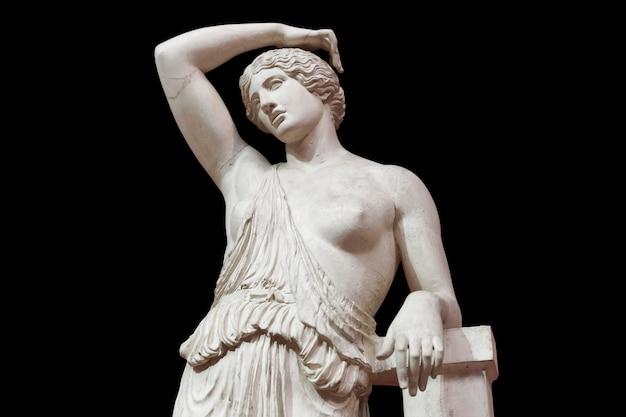The Hellenistic period, which spanned from the death of Alexander the Great in 323 BCE to the establishment of the Roman Empire in 31 BCE, marked a significant shift in artistic and architectural trends. Building upon the foundations laid by classical Greek art, the Hellenistic style showcased a newfound sense of grandeur and realism. From breathtaking sculptures to monumental structures, this era produced visually captivating masterpieces that continue to captivate us today.
In this blog post, we will delve into what set the Hellenistic style apart from its classical Greek predecessor. We will explore the impacts of societal changes, newfound cultural influences, and regional diversity that shaped this artistic movement. Furthermore, we will uncover the fascinating connection between Hellenistic science and its artistic expression, highlighting the achievements of prominent individuals like Polybius, a renowned historian who witnessed the transformation of Greece under Roman rule.

What Sets the Hellenistic Style Apart?
A Melding of Greek Traditions and Foreign Influences
The Hellenistic period was like a rebellious teenager for Greek art and architecture. It took the conventional rules of the classical Greek style and threw them out the window, embracing a colorful, imaginative, and sometimes even outrageous approach. This rebellion was fueled in large part by the vast expansion of the Greek empire and the cultural exchange that came with it.
Bolder, More Emotional Expressions
You know how the classical Greek statues are all about that cool, calm, and collected vibe? Well, the Hellenistic style turned up the volume on emotions. Bursting with life and energy, Hellenistic sculptures depicted a range of feelings, from intense passion to deep sorrow. These sculptures were like the Greek equivalent of reality TV, dialing up the drama to keep you on the edge of your seat.
Movin’ and Groovin’ with Dynamic Poses
Forget the rigid stances of classical Greek sculptures. The Hellenistic style brought movement into the mix. Sculptors began experimenting with dynamic poses that captured the action and momentum of the moment. Figures were depicted in mid-action, frozen in time as if caught in the middle of some epic dance routine. Who needs Zumba when you can appreciate the artistry of a Hellenistic sculpture?
Diverse Cultural Influences
Thanks to the vastness of the Greek empire, cultural influences from all corners of the known world seeped into the Hellenistic style. It was like a giant mash-up of artistic traditions, resulting in a diverse and eclectic mix of styles. Egyptian, Persian, and even Indian influences were blended with Greek techniques, creating a melting pot of artistic expression. It was like a global artistic festival, with each artwork telling its own cultural story.
Detail-Obsessed Masters of Realism
Classical Greek art was all about idealized perfection, but Hellenistic artists took a different approach. They craved realism like a starving artist craves a falafel at 3 a.m. Hellenistic sculptures were filled with intricate details, from the folds in fabric to the texture of skin. These artists were like the CSI investigators of the art world, scrutinizing every nook and cranny to create an immersive and awe-inspiring experience.
Embracing Drama and Theatricality
If you thought your favorite soap opera was dramatic, Hellenistic art and architecture would give it a run for its money. Dramatic emotions, exaggerated poses, and larger-than-life sculptures were the name of the game. It was like an art gallery turned Hollywood red carpet event – who needs silver screen drama when the sculptures themselves steal the show?
A Time of Innovation and Experimentation
The Hellenistic period was a playground for artists and architects. With the classical Greek style as their foundation, they pushed the boundaries and let their imaginations soar. New artistic techniques, the use of different materials, and architectural innovations were all fair game. It was like a wild art party, where creativity was the life of the party, and you never knew what artistic surprise awaited you around the corner.
The Hellenistic style of art and architecture broke free from the constraints of the classical Greek style, embracing a bold, emotive, and diverse approach. With its dynamic poses, attention to detail, and dramatic flair, Hellenistic art and architecture captivated the world and left a lasting impression on the pages of history. So, let’s raise a glass (or a stylus) to the Hellenistic rebels who dared to defy convention and create art that continues to amaze and inspire us today.

FAQ: What made the Hellenistic Style of Art and Architecture Different from the Classical Greek Style?
Why is Hellenistic Science So Important
Hellenistic science was a significant period of scientific advancement that emerged after the Classical Greek era. During this time, advancements were made in various fields, including mathematics, astronomy, medicine, and physics. These breakthroughs laid the foundation for many scientific principles and theories that are still relevant today. Without the contributions of Hellenistic scientists, our understanding of the world and the progress we have achieved in various scientific disciplines would not be as advanced as it is now.
What is Hellenistic Architecture
Hellenistic architecture refers to the architectural style that emerged during the Hellenistic period, which followed the Classical Greek era. It was characterized by grandeur, innovation, and a fusion of different cultural influences. Hellenistic architects introduced new elements, such as colossal statues, elaborate decorative details, and a focus on creating dynamic and dramatic spaces. This style greatly expanded the possibilities of architectural design and influenced subsequent architectural movements.
Is Polybius a Famous Historian
Yes, Polybius is indeed a famous historian. He was a Greek historian who lived during the Hellenistic period and later became a hostage in Rome. Polybius is particularly known for his work “The Histories,” which documented the rise of Rome as a dominant power. His writings provide valuable insights into the political and military developments of his time and are widely studied and referenced by historians.
What Made the Hellenistic Style of Art and Architecture Different from the Classical Greek Style
The Hellenistic style of art and architecture differed from the Classical Greek style in several ways. While the Classical Greek style focused on balance, idealized representations, and restraint, the Hellenistic style embraced emotions, dramatic expressions, and a wide variety of subjects. Hellenistic art often showcased realistic and vivid depictions of human emotions and experiences, abandoning the idealized perfection of Classical Greek sculptures. Similarly, Hellenistic architecture featured complex and innovative designs, incorporating extravagant ornamentation and a sense of grandeur that surpassed the simplicity of earlier Greek architecture.
When Did Polybius Live in Rome
Polybius lived in Rome during the 2nd century BCE. After being captured as a hostage during Rome’s conquest of Greece, he spent much of his life in Rome as a trusted advisor to various Roman leaders. His firsthand experiences and interactions with Roman society greatly influenced his historical writings, providing valuable insights into the workings and transformation of the Roman Republic.
How Many Consuls Were There Each Year in Republican Rome
During the republican era of Rome, two consuls were elected each year to serve as the highest-ranking officials of the Roman Republic. These consuls were responsible for leading the government, commanding the military, and making important decisions for the state. The dual consulship was designed to prevent the concentration of power in a single individual and promote the principles of balance and checks within the Roman political system.
Who Was the Most Famous Scientist
The field of science encompasses a vast array of disciplines, making it difficult to identify a single most famous scientist. Throughout history, numerous scientists have made groundbreaking discoveries and significant contributions to their respective fields. Figures like Isaac Newton, Albert Einstein, Marie Curie, and Charles Darwin are widely recognized for their immense contributions and have left a lasting impact on the world of science.
Who is the Most Famous Hellenistic Age Scientist
Archimedes is often considered the most famous scientist of the Hellenistic Age. He was a Greek mathematician, astronomer, and inventor who made significant advancements in various scientific disciplines. Archimedes’ notable achievements include formulating principles of geometry, developing sophisticated machines and inventions, and laying the foundations of hydrostatics. His contributions to science were incredibly influential and continue to be celebrated to this day.
Which Hellenistic Achievement or Which of the Achievements Mentioned in This Section Had the Greatest Impact and Why
All the achievements mentioned in this section had a profound impact on their respective fields. However, the Hellenistic style of art and architecture stands out for its lasting influence on the development of artistic expression and architectural design. The departure from the Classical Greek style allowed for greater emotional depth, a wider range of subjects, and more innovative architectural forms. The Hellenistic style laid the groundwork for future artistic movements and inspired countless artists and architects throughout history. Its impact can still be seen in modern art and architecture, making it a truly transformative achievement of the Hellenistic era.
